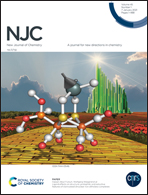Cobalt ion redox and conductive polymers boosted the photocatalytic activity of the graphite carbon nitride–Co3O4 Z-scheme heterostructure†
Abstract
The enhanced photocatalytic hydrogen evolution performance of g-C3N4–Co3O4 2D–1D Z-scheme heterojunctions was achieved by employing the cobalt ion redox and conductive polymers (polyaniline, PANi) for the first time. Specifically, a Co3O4 1D nanobelt acting as the Z-scheme heterostructure component could promote the separation of photo-excited charge carriers and increased the redox capacity, and the conductive PANi brought about the boosted transport efficiency of the charge carriers. Notably, cobalt ions were adopted as the intermediate of the electron transfer between two components for boosting the carrier transport and utilization efficiency. Consequently, the Co3O4 nanobelt, PANi and cobalt ions exhibited a synergistic effect on facilitating the photocatalytic HER performance of the g-C3N4-based heterostructure, and the optimal ternary heterostructure (g-C3N4–PANi–Co3O4) exhibited a photocatalytic H2-evolution rate of 4.61 μmol h−1 under visible light, which further increased to 9.95 μmol h−1 by adding Co2+ solution owing to the further facilitated transport of charge carriers through the redox reaction of cobalt ions. Moreover, even in the absence of sacrificial agents, this Z-scheme system exhibited a photocatalytic hydrogen production activity of 3.35 μmol h−1 in the Co2+ aqueous solution under UV-visible light.



 Please wait while we load your content...
Please wait while we load your content...